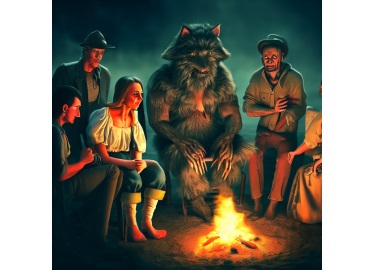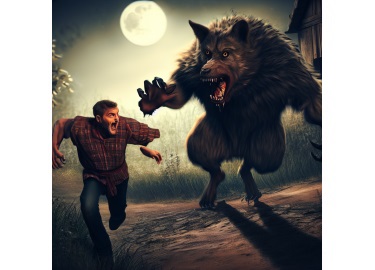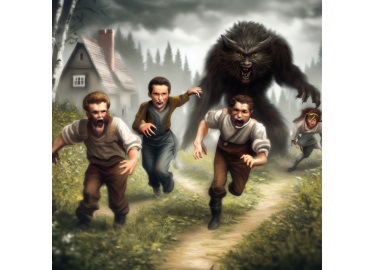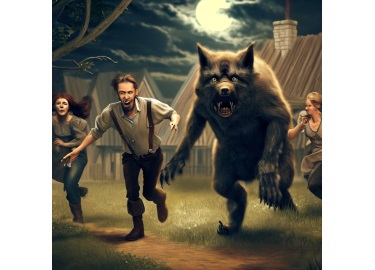
“Werewolf,” a game of deceit created by Dmitry Davidoff, mirrors disinformation dynamics with players navigating trust, betrayal, and false narratives.
When it comes to tabletop gaming, few titles have captured the essence of deception and manipulation as well as Werewolf. Created by Dmitry Davidoff in the 80s, Werewolf has evolved into a popular party game that pits players against each other in a battle of deception and secrecy. Beyond its entertainment value, Werewolf offers a parallel to the world of disinformation, shedding light on the tactics and dynamics at play in the spread of misinformation. The game traces its roots back to the Soviet Union, where Davidoff, a mathematician, and psychology student at Moscow University, first conceived the idea.
The game is played as follows…
Setup: To begin, all players sit in a circle or around a table. One player is designated as the moderator, who oversees the game and guides the narrative. The moderator assigns people roles Werewolves and Villagers, with most people being villagers. The identities of the werewolves are only known to themselves.
Roles: The Werewolves are the antagonists of the game, and their goal is to eliminate the Villagers without being discovered. Each night, the Werewolves secretly choose a Villager to “kill.” The Villagers, on the other hand, must work together to identify and eliminate the Werewolves before they are outnumbered.

Day and Night Phases: The game alternates between day and night phases. During the night, all players close their eyes, those playing Werewolves are allowed to open them and silently select and gesture towards their target. When everyone is told to open their eyes, the moderator reveals who was was killed. The remaining players then discuss and debate who they believe the Werewolves are. The werewolves, whose identities are still unknown, are involved in the discussion and can feed in disinformation and deception.
Voting and Elimination: After deliberation, players vote on who they suspect is a Werewolf. The player with the most votes is eliminated from the game, revealing their role to the group. If the player was a Werewolf, the Villagers rejoice and continue their quest to root out the remaining Werewolves. However, if the lynched player was innocent, the Werewolves inwardly celebrate their victory and continue their reign of terror.
Repeating Rounds: The game continues with alternating night and day phases until one of two outcomes is reached: either all the Werewolves are eliminated, resulting in a Villager victory, or the number of Werewolves equals or exceeds the number of remaining Villagers, resulting in a Werewolf victory.

What sets Werewolf apart is its reliance on interpersonal communication and strategic deception, as players must use persuasion and deduction to uncover the identities of their adversaries. At its core, Werewolf mirrors aspects of the disinformation landscape including:
1. False Narratives and Misdirection: Werewolfs employ tactics such as lying, misdirection, and framing innocent players to sow confusion and doubt. Similarly, disinformation campaigns often rely on false narratives and misleading information to achieve their objectives.
2. Trust and Betrayal: Werewolf hinges on the balance between trust and betrayal. Players must navigate shifting alliances and hidden agendas, not knowing who to trust. Similarly, disinformation exploits trust by masquerading as credible sources or exploiting existing biases. Once trust is compromised, the spread of false information becomes more potent.
3. Echo Chambers and Group Polarization: Werewolf games often result in the formation of echo chambers and group polarization, where players align with like-minded individuals and dismiss dissenting viewpoints. This phenomenon mirrors the dynamics of online echo chambers, where individuals are exposed to curated information that reinforces their existing beliefs.

Davidoff created a game that emphasized social interaction and psychological manipulation with the aim of proving that an informed minority will usually have the upper hand against an uninformed majority. The Werewolves normally win, even though their ability to communicate and strategize is limited to silent gestures when everyone else has their eyes closed. By recognizing the parallels between Werewolf and the spread of disinformation, there are some lessons for combating misinformation and safeguarding the integrity of information ecosystems. Just as in Werewolf, the battle against disinformation requires an open mind, critical thinking and a willingness to challenge our own assumptions.




2 thoughts on “Werewolf: Deception and Disinformation”
hi
Thank you for joining the discussion, Ernestine. It seems like you’re interested in the topic of werewolf deception and disinformation. If you have any specific thoughts or insights to share regarding the excerpt, we would love to hear them. It’s always fascinating to explore the various ways in which deception and disinformation can manifest in different contexts, and werewolf folklore certainly provides an intriguing lens to examine this phenomenon.